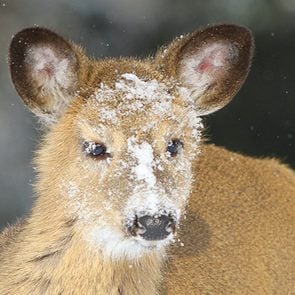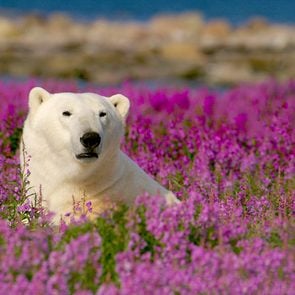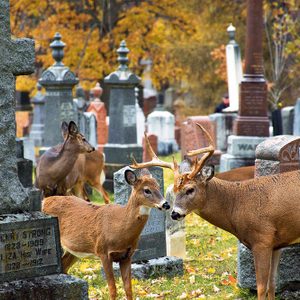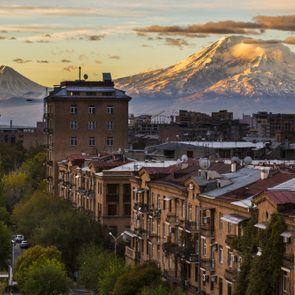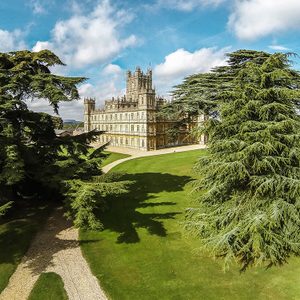Autumn in Canada is a beautiful season. The days are still warm, the leaves are changing colours, and the bugs are not a problem. Whether it’s a day outing or longer, it can be an amazing time for camping, hiking, wildlife viewing and especially photography. Here in British Columbia, I enjoy capturing shots of salmon, birds and bears—what I like to call the B.C. triad.
In B.C., most communities experience a salmon run, and the fall runs are frequently the largest. The Adams River sockeye run is world famous, and every fourth year is considered to be a dominant year, with numbers often in the millions. Next year (2022) should be a large run, but even small, non-dominant runs can be worth a visit. Smaller runs offer opportunities for viewing in small creeks, provincial parks and large rivers. Essentially, the salmon start from the ocean to return to the location of their birth where they spawn and die. The five species of salmon that thrive in B.C. include chinook, coho, chum, sockeye and pink.
Kokanee are landlocked salmon that spawn in the fall. Unlike regular sockeye salmon, they spend their entire lives in fresh water, and are smaller than sockeye, but bear a strong resemblance because of their colour (green and red), and the males have the same distinct hooked nose.
There are many great places to watch for salmon spawning, mainly in October and November. There are several provincial parks where salmon have to navigate waterfalls and difficult terrain in order to reach spawning grounds. If you are looking for a challenge, consider a trip to capture a photo of a salmon jumping into Bailey’s Chute in Wells Gray Provincial Park.

Spotting a Bear
Most often, where you find salmon you’ll find birds, for two reasons. Many birds continue to forage along the shores, and during spawning season, gulls and ducks congregate and feed. Scavengers, including crows, ravens, gulls and eagles, complete the team. The gulls will frequently eat everything from eyeballs to fish guts. It’s not unusual in a day’s outing to observe common mergansers, kingfisher, great blue heron and eagles.
For the past few years, my son, Jamie, and I have spent time on the South Thompson River, travelling by boat up river from Lafarge to Pritchard.
When we start out we are never sure what we’ll see, which adds to the enjoyment of the day. Although we are both serious photographers, one of us seems to have quicker reflexes. By the time Jamie has spotted a bear on the riverbank, I am still fumbling to get out my gear.
This past year, in October 2020, I was determined to “get a bear.” On the return trip I saw what I thought was an old 45-gallon drum resting on its side in the river. I called “bear” as soon as I saw it, hoping to play a trick on Jamie who was running the motor.
It turns out the joke was on me. The closer we got the larger the “drum” became, and I soon realized it was a bear resting on the bank of the river. Black bears come in all colours including black, brown and “old oildrum rust.”

Never a Dull Moment
In addition to the benefits of fresh air, photography provides us with unexpected opportunities. Before we go, we never know what we’ll see, and although the location is the same, what we observe and photograph is always different. Two years ago, for example, Jamie captured several great bear photos. We also each have different pictures of similar scenes, such as eagles in flight, or perched in trees drying their wings.
This past year, we saw some interesting action with crows chasing eagles, eagles diving at each other and a solitary kingfisher cruising the shore and diving into the river. We also estimate that we saw thousands of Canada geese.
Finally, there are locations in B.C. that are world renowned for grizzly bear float trips. After seeing Jamie’s spectacular photos from a trip he took to Bella Coola in September of 2019, we decided to embark on a new adventure. The opportunities to capture photos of landscapes, waterfalls and bears were numerous. When I asked my grandson what the best experience on the five-day trip was, he responded: “Well, Grandpa, I hate to say it, but it was when you fell into the Atnarko River.” That is another story.
Next, check out what it’s like photographing the wildlife of the Laurentians from a kayak.
Being a romantic and a lover of history, art and architecture, I am drawn to the world-class museums of Paris and fairy-tale castles of the Loire Valley.
On the first leg of our journey, my travelling companion and I take the RER train for a day trip to the resplendent Palace of Versailles, about 20 kilometres from the centre of Paris. This is where the Treaty of Versailles was signed, sealing the end of the First World War. The opulent palace- museum projects the glory of Louis XIV, the Sun King, whose sumptuous abode reflects the power of an absolute monarch. Silk, brocade and gilt are standard, and the dazzling Hall of Mirrors is reflected in glittering chandeliers. We stroll the lavish grounds as the fountains dance a water ballet; Apollo and his horses are the pièce de résistance.
After a week soaking up the ambience of cafés, galleries and museums in Paris, it’s finally time to experience the crème de la crème of châteaux in the Loire Valley. We visit one castle each day. Guided bus tours often pack in two or three a day, so our pace is leisurely. We rent a car and take the A10 highway south to château country.
We stop in medieval Amboise, about three hours south of Paris. With its pedestrian-friendly streets, full of art shops, tea salons and patisseries selling melt-in-your-mouth macarons, it’s worth a visit. Château d’Amboise and Clos Lucé, once the manor home of Leonardo da Vinci, are located here. The town of Chenonceaux, which we choose as our springboard, is just 15 min utes further south.

Let’s Go To The Châteaux
The tiny ivy-clad village of Chenonceaux is a short walk to the stunning Château de Chenonceau, known as “the jewel of the Renaissance.” This must-see castle more than lives up to its title and was by far my favourite. In addition to its stunning architecture and the romantic love story of Henry II and his mistress, Diane de Poitiers, this château, built on the Cher River in the 16th century, boasts a chapel, bridge, Florentine gallery and rooms featuring portraits, antique canopy beds and Flemish tapestries. There are two formal gardens: one designed for Henry’s wife, Catherine de Medici, and the other for his mistress, Diane de Poitiers. We stroll through the gardens, taking in marble statues, roses and lavender. Later in the evening, we return for a sound and light show. The sweeping canopy of trees, magnificently illuminated, transform the entranceway into a mauve and azure Monet painting as the music of Corelli is played.
The grandiose Château de Chambord, with its turrets, towers and 440 rooms, is not to my taste. It feels huge and cold and, with many empty rooms, reminds me of a big-box store. Highlights include the double-helix staircase designed by Leonardo da Vinci and the sensational equestrian show performed on the grounds by riders in period costume.
A traveller could easily combine a visit to Chambord’s horse show with a tour of the nearby Château de Cheverny, built in the 17th century of white tufa, which has aged beautifully. In the same aristocratic family for centuries, Cheverny maintains a lived-in feel. It is exquisitely furnished with ornately painted ceiling beams and leather-covered walls. Though fox hunting is a controversial sport, 100 hounds are kept.

de Villandry.
Set on a hill, the multi-turreted Château d’Ussé seems the quintessential fairy-tale castle. Legend has it the château inspired Charles Perrault’s Sleeping Beauty, depicted here by costumed mannequins. Once inside, romance gives over to the reality of just how dark and cold it must have been living in the Middle Ages.
Château Villandry, finally, is the gardeners’ castle. The exquisite gardens, inspired by the Italian Renaissance style, are a triumph of colour, design and plant diversity. There are terraces and belvederes, so you can view and photograph the unique patterns on three levels. The ornamental Garden of Love features delicate, perfectly pruned boxwood hedges in heart shapes. The kitchen garden contains pear trees and outstanding tree roses. Most memorable is the water garden, its pond the shape of a huge Louis XV mirror. Symmetrical fountains offer a Zen-like respite. Swans add to the serenity.
Looking back after so long in lockdown, speaking with locals and travellers while exploring these enchanting destinations without fear—even accepting an invitation to dance in the streets on Bastille Day—seems a free and magical time.
If you seek to spark your imagination and nurture your spirit with architecture, artistry and nature, search no further than the castles of the Loire.
Next, check out the fascinating history of the Isle of Lewis.
Ask any adolescent and they’ll tell you: even at its best, conventional sex ed is the worst. Candice Lys, a 38-year-old public health advocate in Yellowknife, Northwest Territories, jokes that she’s still haunted by a birth video screened during an awkward Grade 8 health class. It’s one reason why she wanted to provide youth with thoughtful, accurate information about their bodies.
That’s an even greater challenge in the North, where distances between small, tight-knit communities create obstacles to accessing health services like STI testing and birth control. Chlamydia is seven times more prevalent among youth between 15 and 24 years old in the Northwest Territories compared to the rest of the country, and for every 1,000 young women aged 15 to 19, there are 103.7 pregnancies, which is nearly three times the Canadian average.
Statistics like these drove Lys and Nancy MacNeill, a fellow health advocate in Yellowknife, to co-found FOXY, or Fostering Open eXpression among Youth, in 2012. Their approach is groundbreaking: holistic, arts-oriented programming around sexual health for and with young women and gender-diverse youth in the North. At each of their workshops, participants use Indigenous forms of knowledge, such as traditional drumming and beading, in addition to theatre, storytelling, music and photography as tools to articulate their own experiences.
Another innovation: rather than adults lecturing teens, youth help develop programming and engage in interactive conversations. They are also provided with leadership training to become peer leaders and facilitators.
Pyper Rehm, a 21-year-old in Yellowknife, attended her first FOXY retreat at the age of 13, returned at 15 and has since become a peer facilitator, travelling to schools and youth groups around the Northwest Territories to help facilitate sessions. “We aren’t teachers,” says Rehm. “It’s interactive, and because we present ourselves as peers, not superiors, it’s more comfortable.”
It helps that many of FOXY’s lessons happen outside the classroom. The organization’s summer programming, for example, takes place in the wilderness. Participants, who range in age from 13 to 17, can apply for all-expenses-paid trips where they develop community projects to take home and share with people around them.
“The activities we do encourage us to be safe, mentally and sexually,” says Shayla Moore, a 16-year-old participant from Hay River. “We learn ways to take care of ourselves and our bodies—because you only have one body for the rest of your life.”
In 2016, Lys and MacNeill added SMASH (Strength, Masculinities and Sexual Health), FOXY’s counterpart for young men, to their programming. Over the past nine-plus years, FOXY and SMASH have hosted more than 550 workshops and 25 peer-leader retreats, connecting with nearly 6,700 youth in 41 different communities across the Northwest Territories, Nunavut and Yukon. Also in 2016, in recognition of their work, Governor General David Johnston gave Lys and MacNeill the Meritorious Service Medal.
But the most powerful moments, Lys says, have been the simplest ones. Take, for example, the first time FOXY ran an anonymous question box session for youth. Participants eagerly peppered facilitators with hours of queries about periods, birth control and more. “Young folks want a safe space where they can ask questions and not be judged,” Lys says. “They want bodily autonomy and independence, but they need information to figure things out.”
Next, check out how this mentorship program in Toronto helps vulnerable youth succeed.
